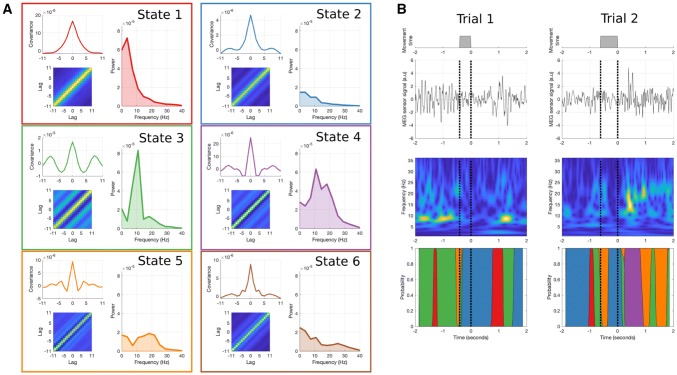Fig. 4.
The application of the time-delay embedded Hidden Markov Model (TDE-HMM) to detect transient spectral events in real sensor space MEG data. Results are obtained by combining data across all trials (epoched to movement offset) and runs. a The inferred observation models for the six HMM states. Each box contains three sub-figures. Top-Left—the state autocovariance function as a function of embedding lag, taken from the centre row of the autocovariance matrix. Bottom-Left—the whole state autocovariance matrix. Right—the state power spectrum computed from the fft of the autocovariance function. b Two example Go trials. Each plot shows the movement duration (from onset to offset of abduction of right index finger), the trial time-course, time–frequency transform using wavelets and the HMM state posterior probabilities

